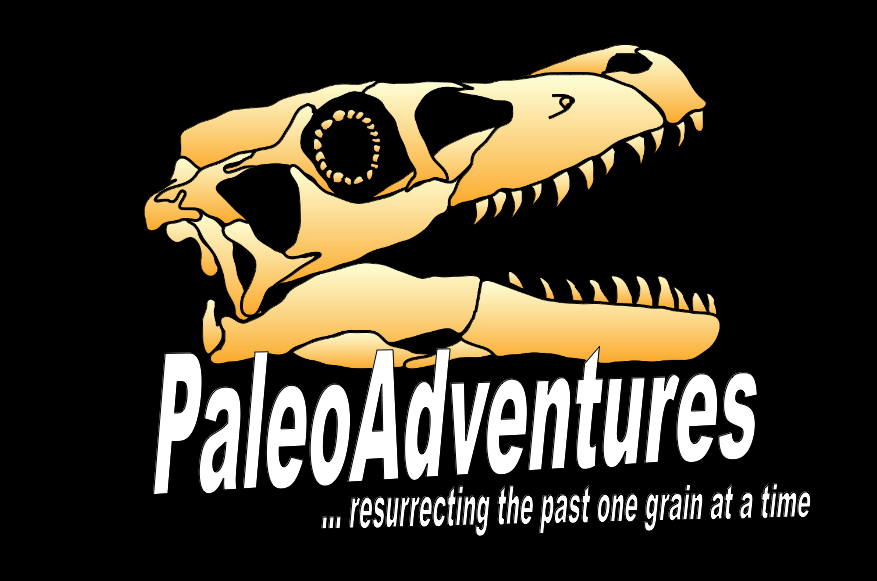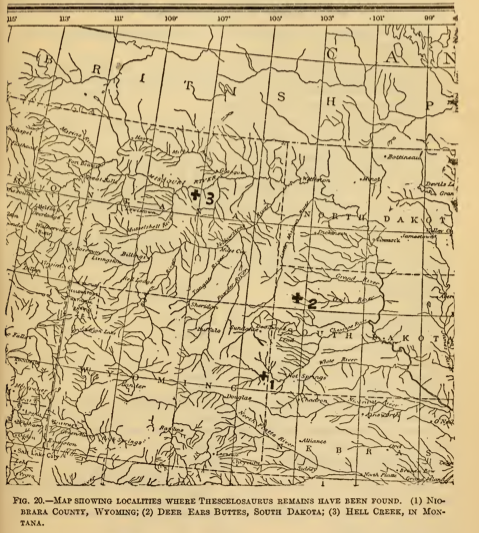A History Lesson From Old Bones
Preparing dinosaur bones often requires a lot of research. You want to compare the fossils you find with those found by others, to not only aid in taxonomic classification, but also to aid in future exploration, restoration, prep, etc. One of the really neat things I discovered this winter, while preparing and researching some of our Thescelosaurus bones, is that our Dears Ears Buttes quarries (including Tooth Draw and Tooth Draw West) may have actually been discovered, not in the 1970's as we all assumed, but way back in 1891!
In the 1915, original description of Thescelosaurus, Charles Gilmore (a paleontologist from the Smithsonian Institute) describes several specimens he used to define the genus. One of the main bones he used, was a single bone of Thescelosaurus (the paratype of the scapula currently at the Smithsonian- USNM-7760), that was reportedly discovered by the legendary fossil hunter, John Bell Hatcher from "Deers Ears Buttes", South Dakota, during the summer of 1891.
Hatcher was a young paleontologist, employed at the time by Othniel Charles Marsh and the Yale Peabody museum. Marsh had sent Hatcher west in pursuit of cool new dinosaurs for Marsh to describe. Marsh was particularly interested in the bones and unusual horns of what would eventually be called ceratopsian dinosaurs. Hatcher was sent to Eastern Wyoming in 1888 and had been working the "Triceratops beds" there for many years. From 1888 - 1893, he collected over 30 skulls and some 17 partial skeletons of Triceratops for the Yale Peabody Museum- an amazing feat considering he had only a handful of assistants and no mechanical tools to excavate and haul off the incredibly heavy bones. Apparently, during this time, Hatcher also did an exploratory run through Butte County, South Dakota, including a quick stop on "Deers Ears Buttes". There, he apparently recovered an ornithopod scapula (USNM-7760), and most likely other bones, before returning to Wyoming. Shortly after this quick trip though, he discovered more Wyoming ceratopsians, including two skulls of the famous Torosaurus now on display at the Yale Peabody Museum. Had he not found these other specimens, he may very well have returned to Butte County and continued to dig there. If he had, our sites may not have been called Tooth Draw and Tooth Draw West, but rather Hatcher Quarry number 12 and 13.
So far, I can find no record of him returning to Butte County, nor can I find any other references of this trip or any other bones from it. More research needs to be done on this little historical factoid to confirm it, but just knowing that Hatcher may have walked those grounds is a very interesting story for a paleo-geek like myself.
From: Gilmore, Charles W., (1915). "Osteology of Thescelosaurus, an Ornithopodus Dinosaur From the Lance Formation of Wyoming". Proceedings of the U.S. National Museum 49 (2127): 591–616.
John Bell Hatcher circa 1890's
From the Yale Peabody Museum Collection


